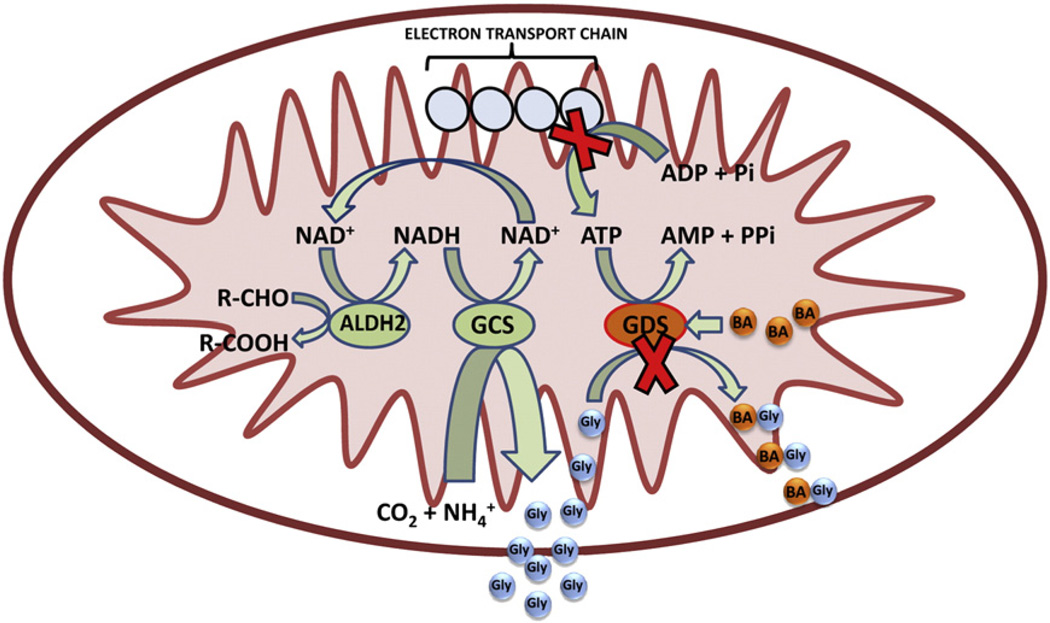Fig. 7.
The effect of ifosfamide toxic aldehydes on the glycine cleavage system and glycine deportation system in the mitochondrial matrix. In this representation of the mitochondrion, showing the outer and inner membranes and the mitochondrial matrix, the aldehyde metabolites of ifosfamide (IFO), chloracetaldehyde and acrolein (represented by R-CHO), inhibit ATP production by the electron transport chain (shown by red X). They are also metabolized by aldehyde dehydrogenase 2 (ALDH2), thus converting NAD+ to NADH. The aldehyde overload in the liver from IFO therapy thus causes NADH sequestration in the mitochondrial matrix (shown in pink). This excess NADH drives the glycine cleavage system towards the de novo synthesis of glycine (GLY). The shortfall in ATP production attenuates the glycine deportation system (shown by red X) and GLY is no longer scavenged by benzoic acid (BA) and converted into hippuric acid (BAGly) for deportation and thus plasma levels of GLY rise.

